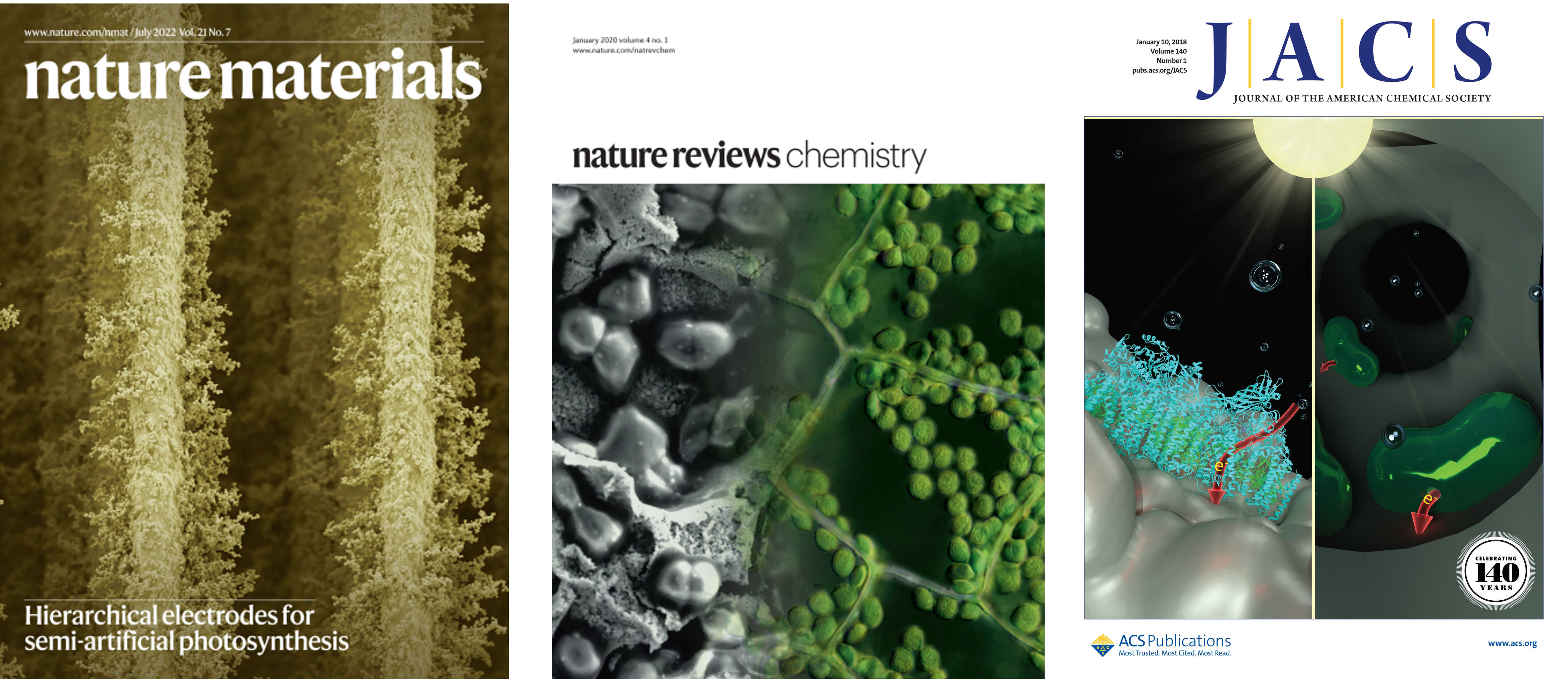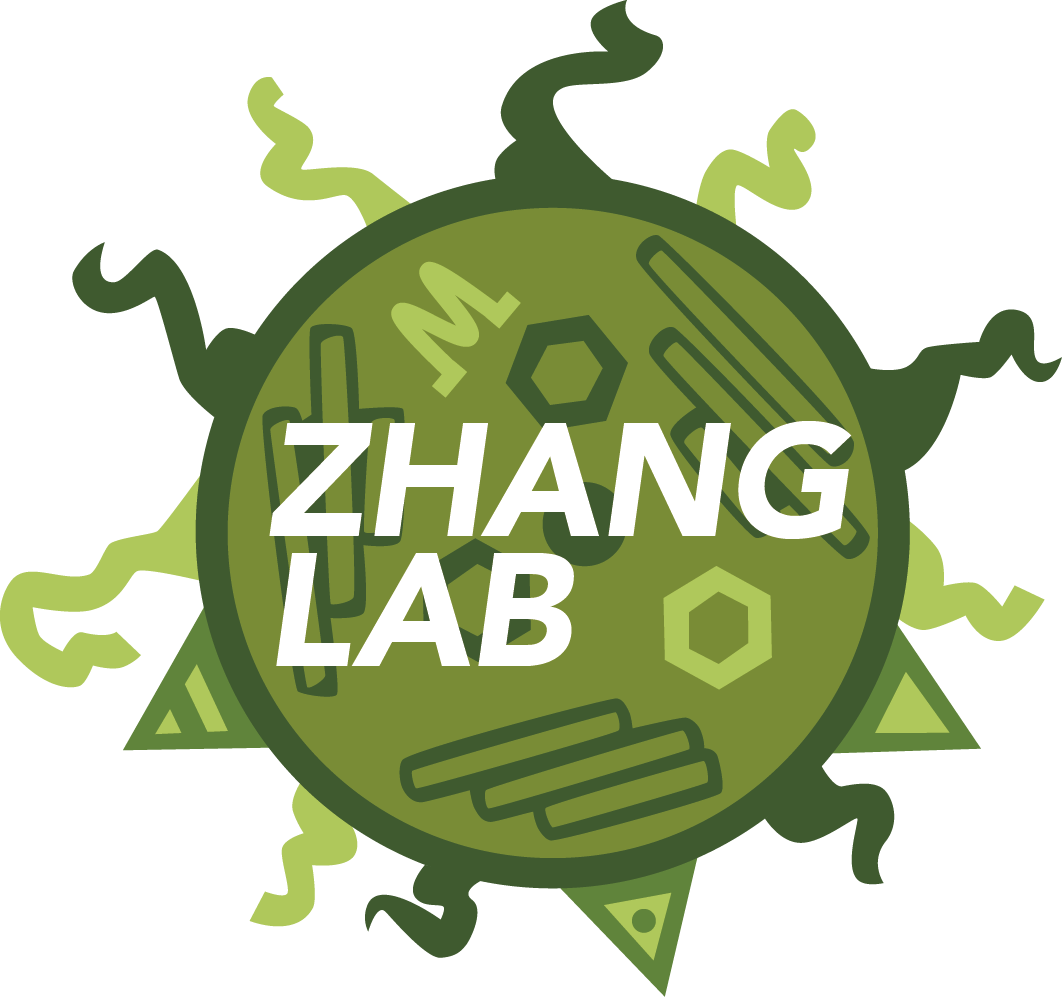"Creativity is seeing what others see and thinking what no one else ever thought" - Albert Einstein
Rethinking bioenergy for clean energy generation using bio-hybrid approaches
Bioenergy (biofuels) currently make up approximately 12% of the energy market and is currently one of the only alternatives for fossil fuels. As a 'renewable' form of energy, bioenergy is highly controversial since it has several significant drawbacks, including inefficiency and high demand of agricultural land. We aim to completely re-think how we derive energy from biology so that it is much more sustainable and efficient.
Nature has built a multitude of impressive catalysts and molecular machineries that cannot be replicated in the lab, whilst materials science offers many components with new-to-nature functionalities. We blend biology with materials chemistry to develop bio-hybrid systems that can sustainably generate renewable electricity and/or chemicals more efficiently than what is possible in classical bioenergy technologies. They also offer distinct advantages over state-of-the-art solid state technology because they leverage earth-abundant and eco-friendly bio-materials that have a wide catalytic repertoire, are self-renewing and robust, and operates efficiently in diverse terrains and environmental conditions. Towards this, we are building bio-photoelectrochemical devices and artificial cells with new solar-to-chemical conversion capabilities.
Collaborators: Prof Nicolas Plumere (TUM), Prof Erwin Reisner (Cambridge), Prof Luning Lui (Liverpool), Prof Tuomas Knowles (Cambridge), Prof Dominic Wright (Cambridge)
3D printing of (photo)electrodes
The choice of electrodes used in any electrochemical and electrosynthetic device matters enormously. In particular, the macro-architecture of the electrode, the nano-roughness of the surfaces, and the material properties of the electrode can each influence the overall performance. We explore 3D-printing and other state-of-the-art fabrication methods to tailor electrodes and electrochemical devices to enhance the performance of electrocatalysts with complex requirements - like living cells. Coupled with this, we collaborate with others to develop novel approaches to characterise complex 3D electrode structures in ways that classical electron microscopy and imaging techniques cannot probe. We also employ machine learning and modelling to deduce ideal electrode structures.
Collaborators: Profs Stephan Keller and Jenny Emnéus (DTU), Prof Michael De Volder (Cambridge), Prof Nicolas Plumere (TUM)
Photosynthesis on an electrode
Photosynthesis is the primary light energy conversion process that underpins life, food security, and carbon/nitrogen/oxygen cycles on Earth. The complex chemistry and biophysics occurring within photosynthetic organisms are both inspirational and baffling to scientists of many disciplines, the unravelling of which could have far reaching impact on agricultural and bio-energy technologies in the future.
Cyanobacteria are one of the oldest and most abundant life forms on Earth (they thrive in the oceans, glaciers and even hot springs!), and are only going to become more abundant with global warming. They are also excellent model organisms for studying photosynthesis. It is still poorly understood how these cells perform and regulate electron flow to enable complex tasks. For example, how do these cells mitigate light damage and redox stress? Why and how do they expel energetic electrons to their environment (also known as extracellular electron transfer)? These are some of the questions that we are trying to answer using a range of biophysical approaches including fluorescence microscopy, ultra-fast spectroscopy and electrochemistry.
Collaborators: Prof Christopher Howe (Cambridge), Prof Nicolas Plumere (Munich), Prof Marc Nowaczyk (Rostock), Prof Mary Wood (Copenhagen), Prof Akshay Rao (Cambridge).
Coral bleaching, anti-fouling and a world of possibilities
Electrochemistry is a powerful technique for interrogating and controlling energy/electron transfer processes at an electrode surface. It forms the foundation of many energy conversion technologies, sensors, and synthetic processes. Here, we work with biologists and theoreticians to 'wire' proteins, membranes, components and living organisms to electrodes to establish novel ways of probing or changing the fundamental electron transfer processes and pathways. Currently, we are using this to:
i) Develop new ways to study coral bleaching. Corals cover 0.2% of the ocean, but supports 25% of marine life. Dinoflagellates are photosynthetic protists that form symbiotic relationships with corals. The breakdown of this relationship causes coral bleaching, and the mechanisms of this is very poorly understood. We are employing our suite of chemical biology techniques, including electrochemistry, to study how this relationship might be breaking down in response to changes to the climate.
Collaborators: Prof Christopher Howe (Cambridge), Prof Ellen Nisbet (Nottingham), and Adrian Barbrook (Cambridge).
ii) Develop new anti-fouling methods and disrupt problematic biofilms. Most microorganisms exist in communities known as biofilms - cells in biofilms exhibit vastly different physiology to cells in planktonic states. In certain contexts, these biofilms can be extremely problematic (for example, increasing the resistance of certain microbes to anti-biotics by 1000-fold, fouling of medical instruments and marine vessels). We are innovating novel ways to eradicate biofilms using a mix of redox chemistry and materials science.
Collaborator: Prof Martin Welch (Cambridge)
iii) Explore a range of possibilities with other amazing scientists around the world, such as characterising antioxidants in baobab seed shells with Prof Mercy Badu (Kwame Nkrumah University Of Science And Technology, Ghana), and looking at how DNA aptamers could be used in sensors for heavy metals in contaminated water with Prof Ismaila Emahi (University of Energy and Natural Resources, Ghana).


